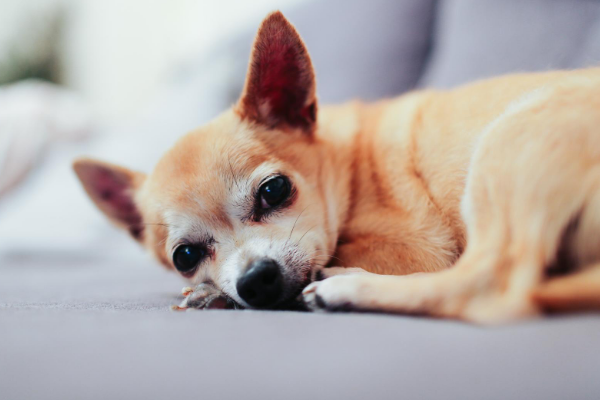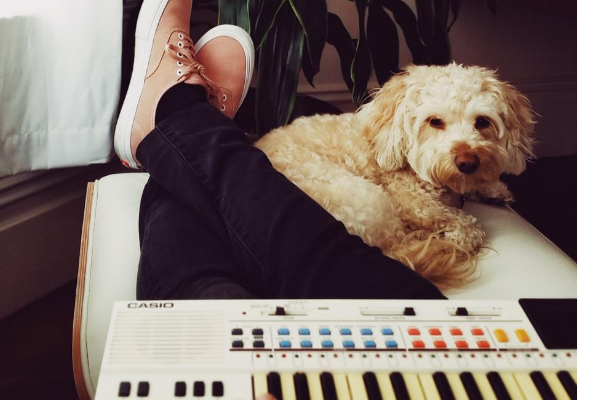How to house train an older dog
08/27/20 4:11 PM
Can an older dog be potty trained? Turns out that the saying “you can’t teach an old dog new tricks” is wrong! Whether your previously housebroken adult dog is regressing, or you’re house training a rescue dog or newly adopted adult dog for the first time, house training an older dog is absolutely doable. Here’s how.
How to house train an older dog: house training 101

What if your dog is not house trained at 1 year old? Or what if your dog is 15 years old and has recently started going in the house? No matter the age, the basics of house training are the same.
Establish a routine with your dog
Give your dog a chance to go outside in the morning, before bedtime, and one or two other times during the day at a minimum. A healthy adult dog can hold their pee for 6-8 hours – don’t expect much longer than that!
Train your dog to give a signal
Take training a step further by making your dog ring a potty training bell by the door every time you go out. In time, your dog will learn that when they want to go out, they can ring the bell to let you know.
Praise your dog's good behavior
When your dog pees outside, give verbal praise in a positive tone to reinforce the behavior. You can even give your dog a treat right afterwards to help them associate the act with something good.
Watch your dog when inside
If your dog is regularly going in the house, supervise them inside. Look for signs like pacing or whining that can indicate your dog needs to go, and go outside. If your dog starts to go, try to take them outside immediately to go there instead.
Create a safe space for your dog
When you can’t watch over your dog inside, keep them to a confined area like a crate, small bathroom, or portion of a room blocked off with baby gates.
Investigate the cause of your dog’s potty training issues

What if you’ve tried all the advice and your dog is still having accidents in the house? Then it’s time to find out why. Address the underlying problem, and you can get back to house training.
Environment
Your dog may know not to “go” inside your house, but this may not translate to all indoor locations. If your dog is good at home, but goes in other buildings, be prepared to do extra potty training in other places until they understand.
Behavioral
Your dog may be expressing anxiety, stress, fear, or displeasure by going potty in the house. Have you recently moved homes, lost or added a family member (canine or human), or had any other big life changes? If so, this could be why. Reinforce good behavior with the techniques described above and give them time to adjust to the new normal.
Also, some dogs mark their territory by peeing inside. This is much more common in unneutered male dogs, so neutering helps (as does spaying in female dogs who mark).
Diet
Have you changed your dog’s diet recently? Something as simple as switching kibble can throw off a dog’s digestion and lead to a change in their potty routine.
Medical
If you’ve ruled out the reasons above, the problem could medical. UTIs, hypothyroidism, diabetes, kidney disease, bladder stones, Cushing’s disease, and cognitive disorders are just some of the more common reasons. If house training simply isn’t working, visit your vet to find out why.
You CAN Potty Train an Older Dog
Rest assured that it is possible to potty train your older dog. As with any type of dog training, it just takes patience and time. Don’t give up!

